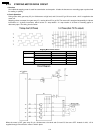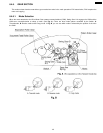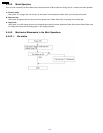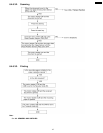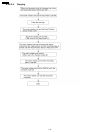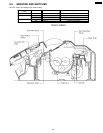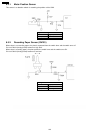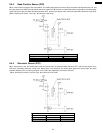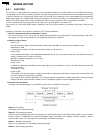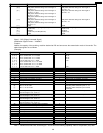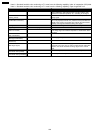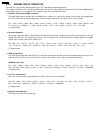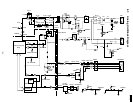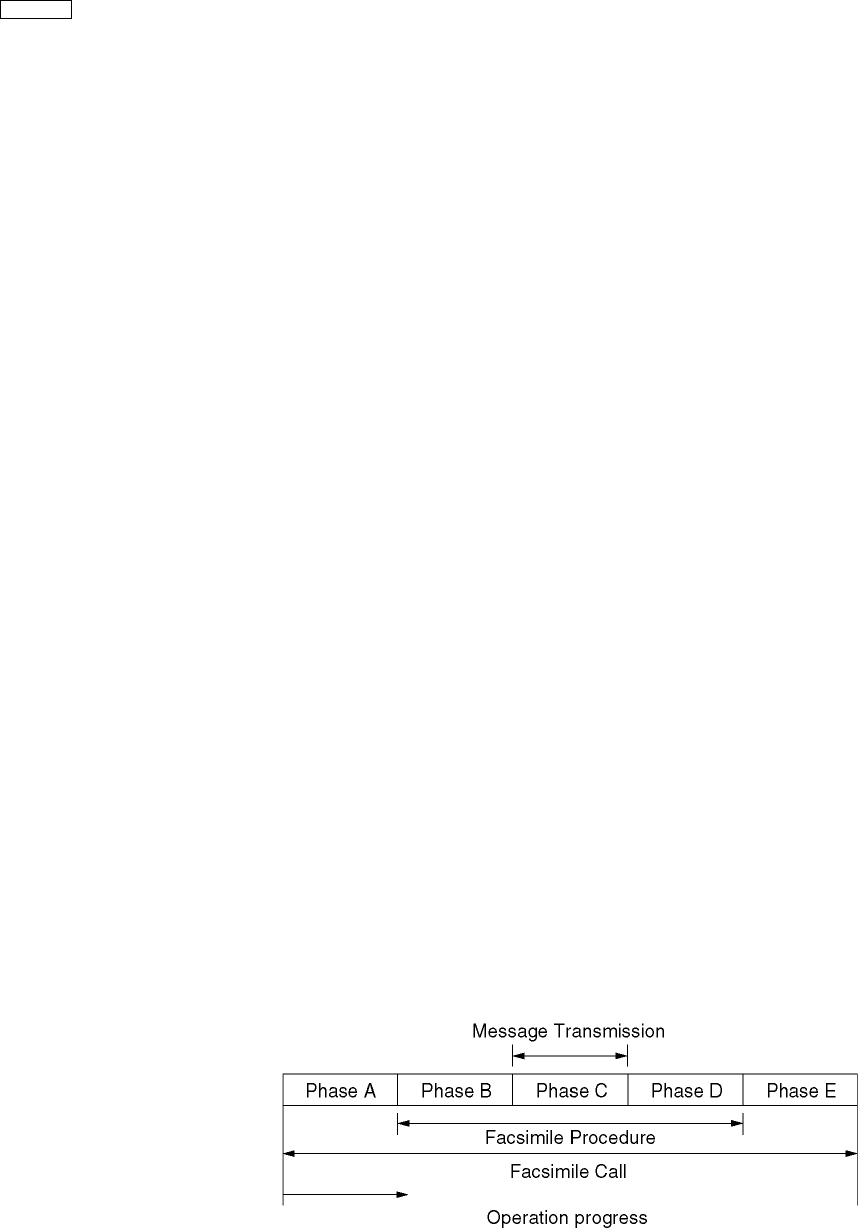
6.6. MODEM SECTION
6.6.1. FUNCTION
The unit uses a 1 chip modem (IC1), enabling it to act as an interface between the control section for FAX sending and receiving,
and the telephone line. During a sending operation, the digital image signals are modulated and sent to the telephone line. During
a receiving operation, the analog image signals which are received via the telephone line are demodulated and converted into
digital image signals. The communication format and procedures for FAX communication are standardized by ITU-T. This 1 chip
modem (IC1) has hardware which sends and detects all of the necessary signals for FAX communication and DTMF.
It can be controlled by writing commands from the ASIC (IC1) to the register in the modem (IC1).
This modem (IC1) also sends DTMF signals, generates a call tone (from the speaker), and detects busy tones, dial tones and
DTMF.
Overview of Facsimile Communication Procedures (ITU-T Recommendation):
1. ON ITU-T (International Telecommunications´ Union.)
The No. XIV Group of ITU-T, one of the four permanent organizations of the International Telecommunications Uniib (ITU),
investigates and make recommendations on international standards for facsimiles.
2. Definition of Each Group
· Group I (G1)
A-4 size documents without using formats which reduce the band width of a signal sent over telephone lines.
Determined in 1968.
Transmission for about 6 minutes at scanning line density of 3.85 lines/mm.
· Group II (G2)
Using reduction technology in the modulation/demodulation format, an A-4 size document is sent at an official scanning line
density of 3.85 lines/mm for about 3 minutes.
Methods to suppress redundancy are not used.
Determined in 1976.
· Group III (G3)
A method of suppressing redundancy in the image signal prior to modulation is used. An A-4 size document is sent with
about one minute.
Determined in 1980.
· Group IV (G4)
Transmission is via the data network. A method is provided for suppressing redundancy in signals prior to transmission, and
error-free reception of transmission is possible.
The scope of these facsimile applications is not limited simply to transmission of written statements. Through symbiotic
linkages with other communication methods, it can be expected to expand to include integrated services.
3. Facsimile Call Time Series
As shown in the following diagram, the facsimile call time series is divided into five phases.
Phase A : Call setting
Call setting can be manual/automatic.
Phase B : Pre-message procedure
Phase B is a pre-processing procedure and sequence for confirming the status of the terminal, transmission route, etc. and for
terminal control. It implements the terminal preparation status, determines and displays terminal constants, confirms
synchronization status, etc. and prepares for transmission of facsimile messages.
Phase C : Message transmission
Phase C is the procedure for transmitting facsimile messages.
Phase D : Post message procedure
122
KX-FT21RS



